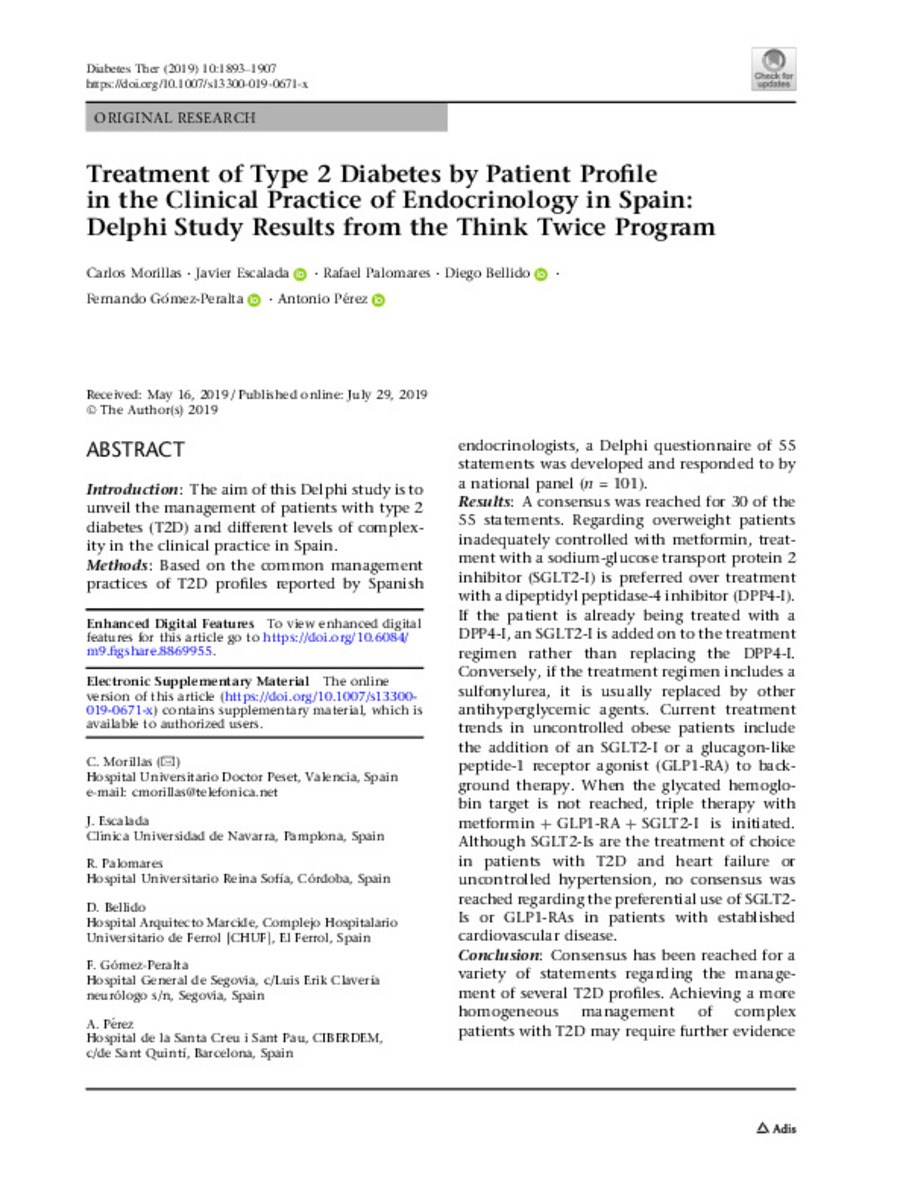Treatment of type 2 diabetes by patient profile in the clinical practice of endocrinology in Spain: Delphi study results from the think twice program
Palabras clave :
Clinical practice
Complex patient
Delphi questionnaire
Endocrinology
Type 2 diabetes
Fecha de publicación :
2019
Editorial :
Springer Science and Business Media LLC
Nota:
This article is distributed
under the terms of the Creative Commons
Attribution-NonCommercial 4.0 International
License (http://creativecommons.org/licenses/
by-nc/4.0/), which permits any noncommercial use, distribution, and reproduction in any
medium, provided you give appropriate credit
to the original author(s) and the source, provide
a link to the Creative Commons license, and
indicate if changes were made.
Cita:
Morillas, C. (Carlos); Escalada, J. (Javier); Palomares, R. (Rafael); et al. "Treatment of type 2 diabetes by patient profile in the clinical practice of endocrinology in Spain: Delphi study results from the think twice program". Diabetes Therapy. 10, 2019, 1893 - 1907
Aparece en las colecciones:
Estadísticas e impacto
0 citas en

0 citas en

Los ítems de Dadun están protegidos por copyright, con todos los derechos reservados, a menos que se indique lo contrario.







